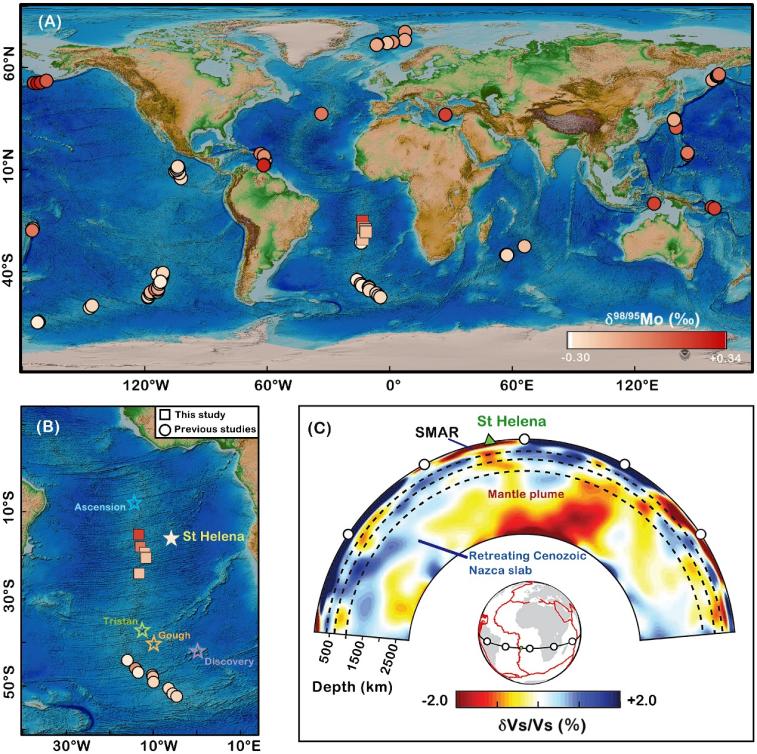2025-04-10 中国科学院(CAS)

Fig. 1 Global Mo isotopic compositions of mid-ocean ridge and arc basalts, and seismic tomography of the deep structure beneath the St. Helena plume–South Atlantic ridge system. (Image by IOCAS)
<関連情報>
- https://english.cas.cn/newsroom/research_news/earth/202504/t20250410_1040930.shtml
- https://www.sciencedirect.com/science/article/abs/pii/S0012821X25000937?via%3Dihub
磁性多殻金ナノ粒子の最内殻原子を取り除いてCO2をCO2にほぼ単一に変換する Remove the innermost atom of a magnetic multi-shell gold nanoparticle for near-unity conversion of CO2 to CO
Zuxing Chen, Fang-Zhen Teng, Robert J. Stern, Yuxiang Zhang, Jie Li, Zhigang Zeng
Earth and Planetary Science Letters Available online: 10 March 2025
DOI:https://doi.org/10.1016/j.epsl.2025.119294
Highlights
- Arc-like heavy Mo isotopes in south Mid-Atlantic Ridge basalts (15–24°S).
- High δ98/95Mo in MORBs controlled by recycled subduction-modified mantle.
- Ghost-arc Mo isotope signatures in MORBs relates to ancient subduction processes.
- Mo isotopes shed new light on the formation of ghost-arc signatures in MORBs.
Abstract
“Ghost” arc geochemical signatures persistently occur in mid-oceanic ridge basalts (MORBs), yet their origin remains elusive. Here, we identified arc-like heavy Mo isotopic compositions in basalts from the St. Helena plume-influenced southern Mid-Atlantic Ridge. Their heavy Mo isotopic signature (δ98/95Mo = –0.21 ‰ to +0.11 ‰), along with relatively low (La/Sm)N, Nb/Zr, Ce/Pb, and Sr-Nd isotope ratios, cannot be explained by interactions of the depleted mantle with recycled crustal or lithospheric mantle materials or the influence of the St. Helena plume on their mantle source. By integrating seismic tomographic images and plate reconstruction models, we interpret these unique geochemical and heavy Mo isotopic signatures to reflect the inputs of fluid-modified mantle produced during the Mesozoic subduction beneath the southwestern Gondwana convergent margin. Our discovery provides crucial evidence for the role of the paleo-subduction-modified mantle in shaping present-day MORB-mantle heterogeneity and sheds light on the formation of ghost-arc signatures in global MORBs.



